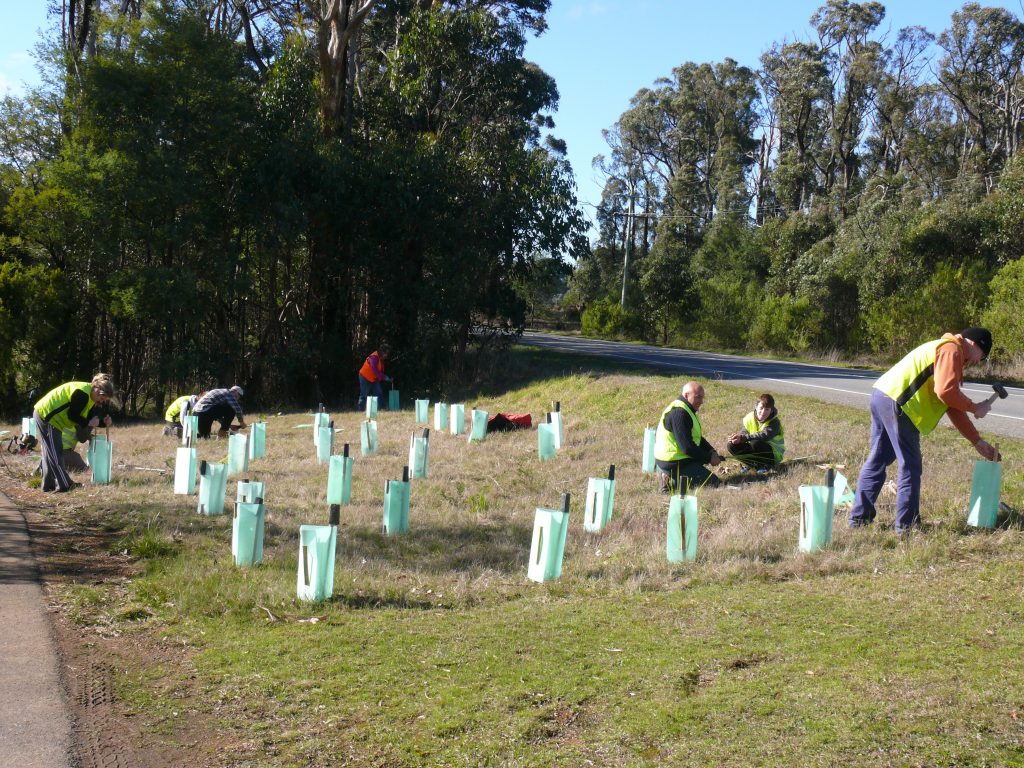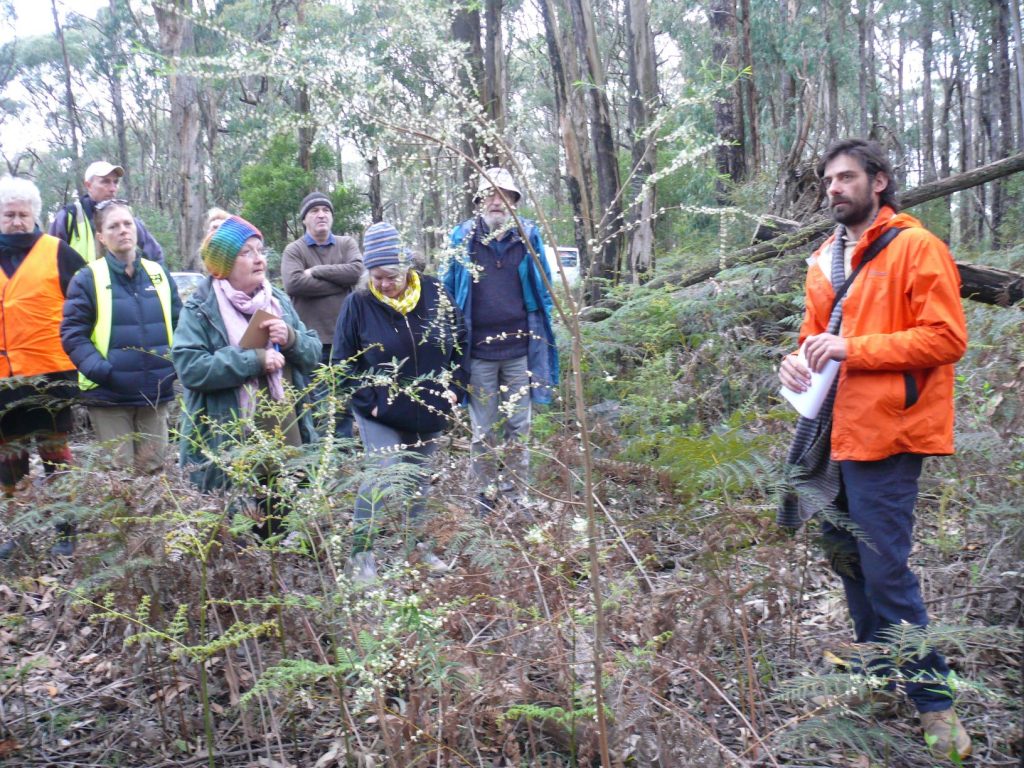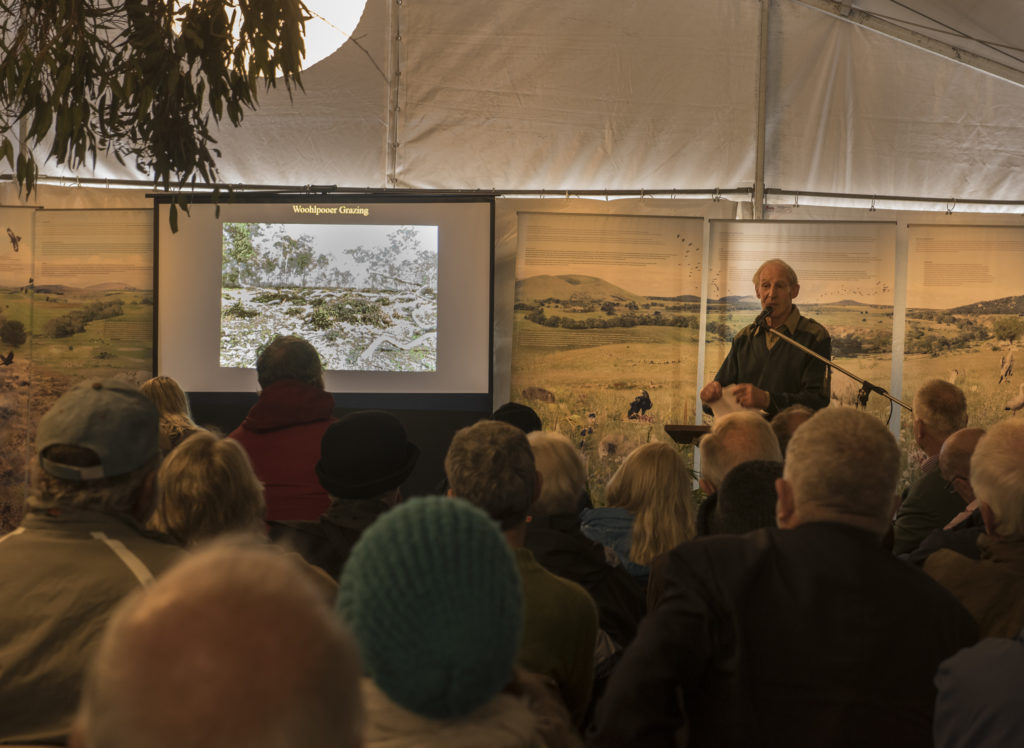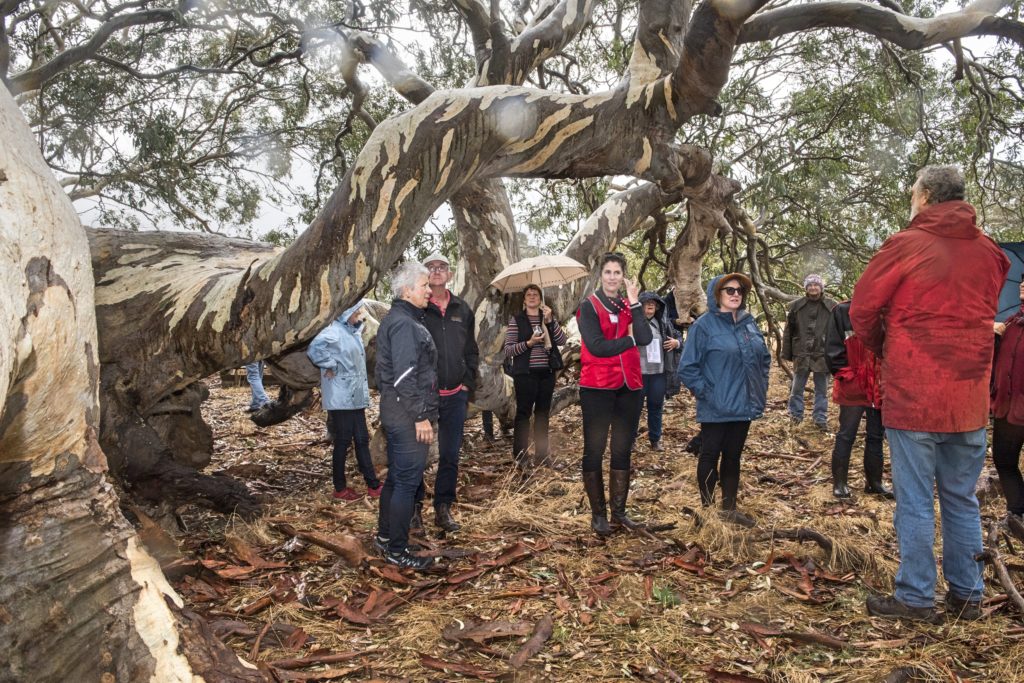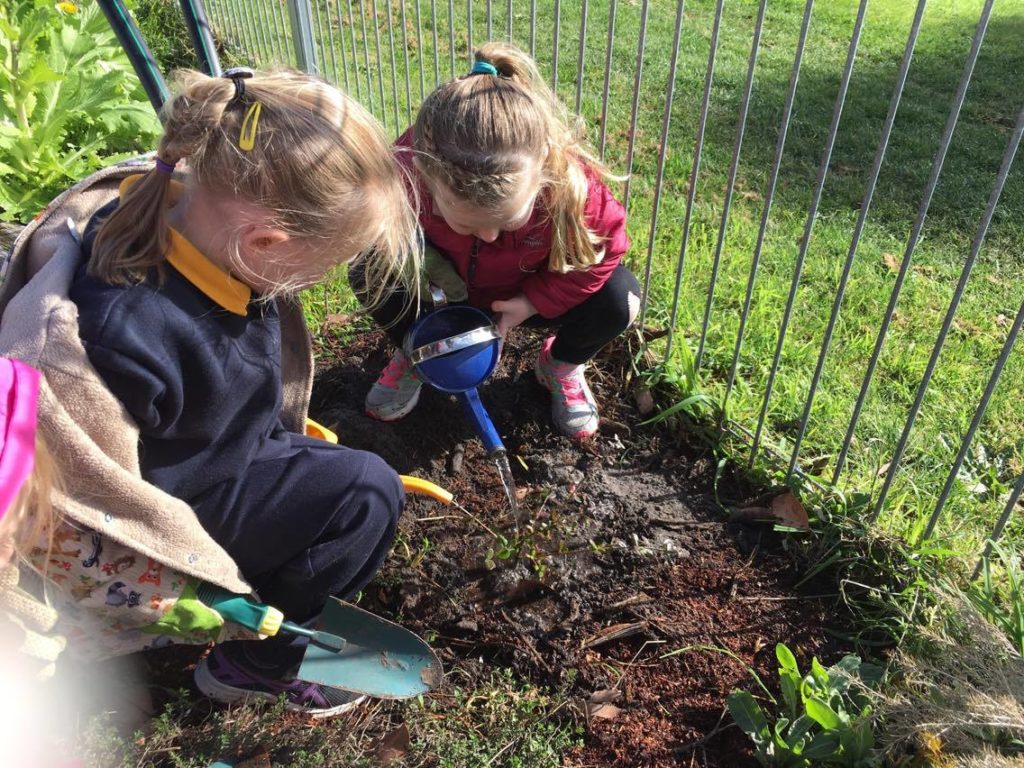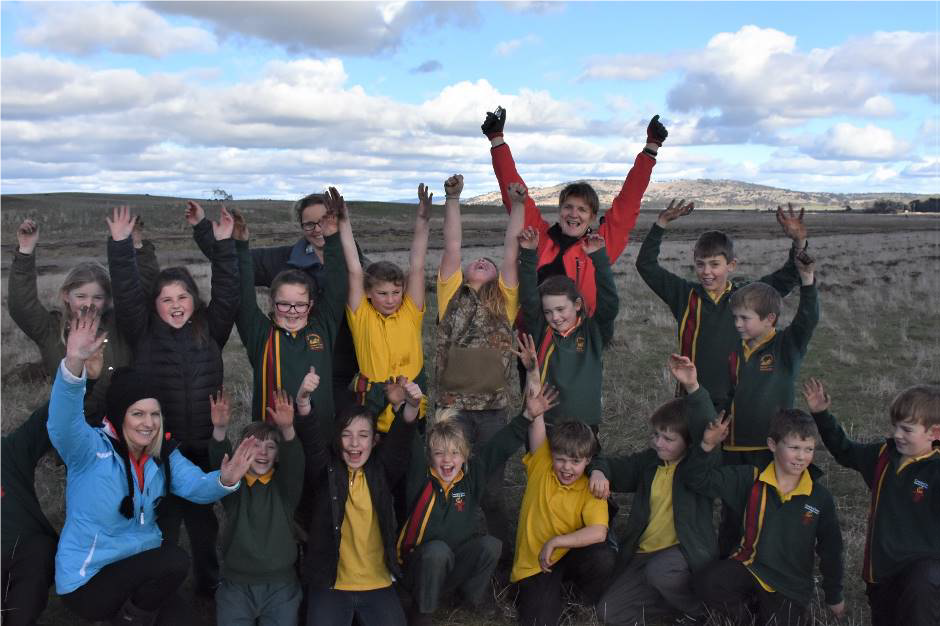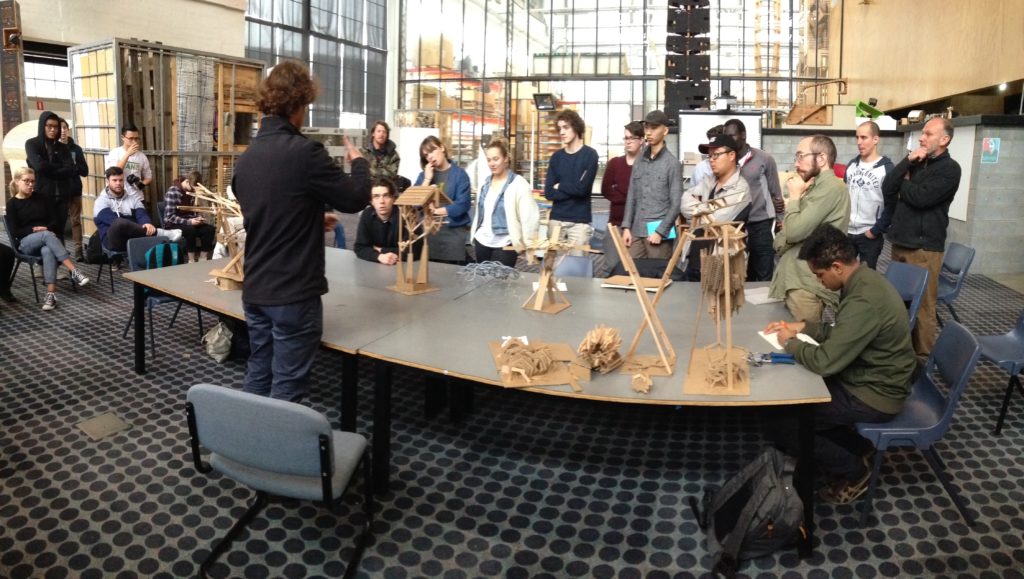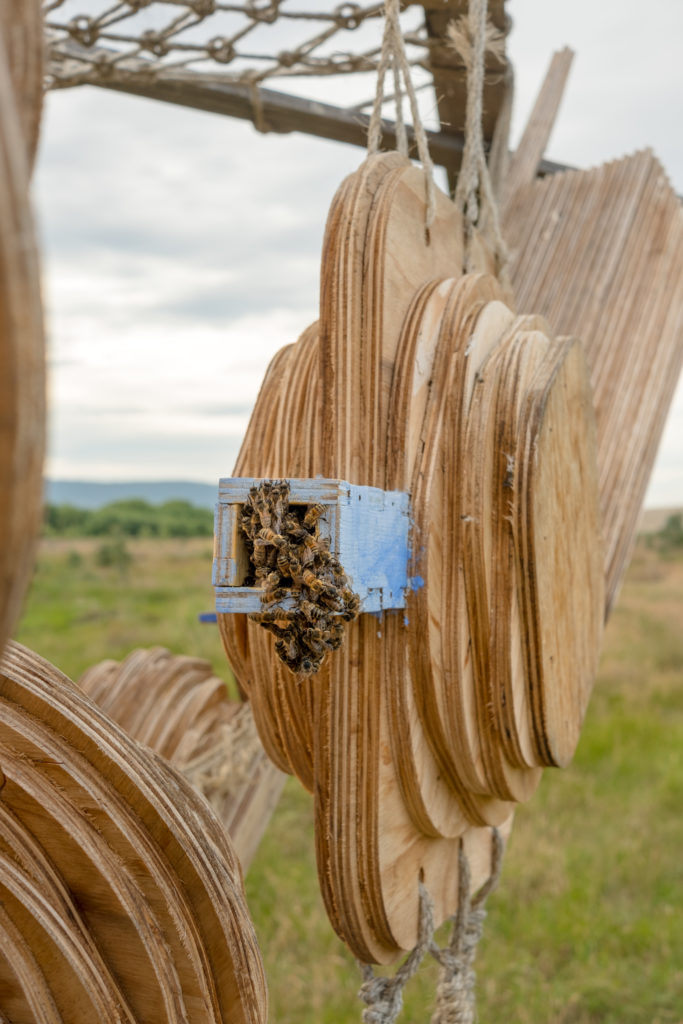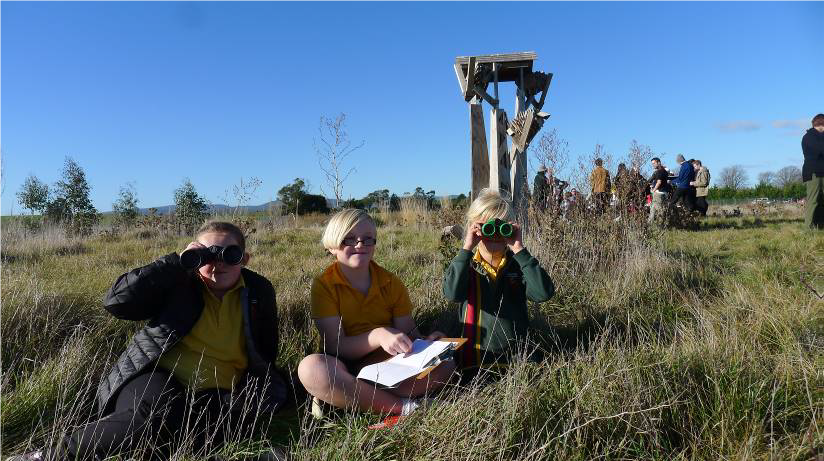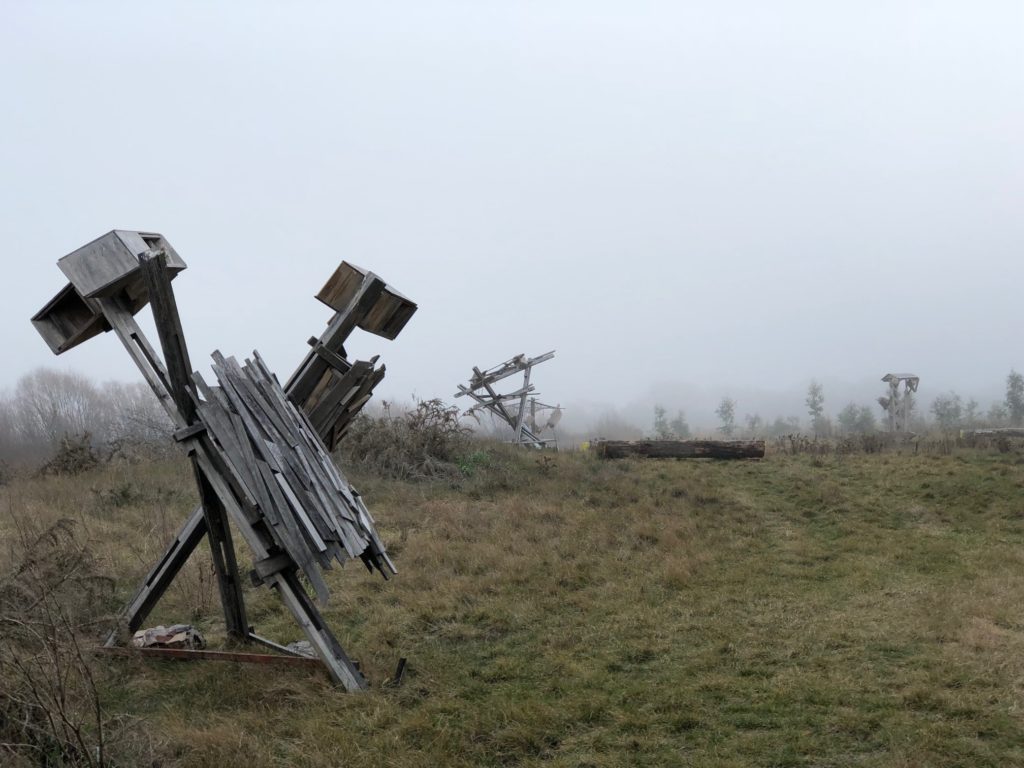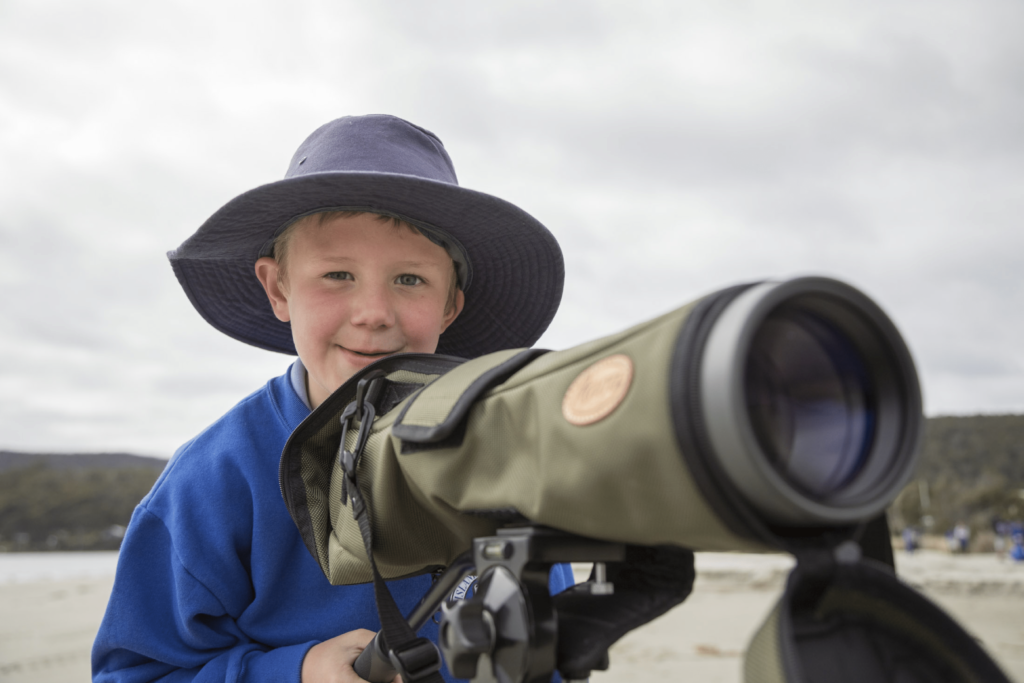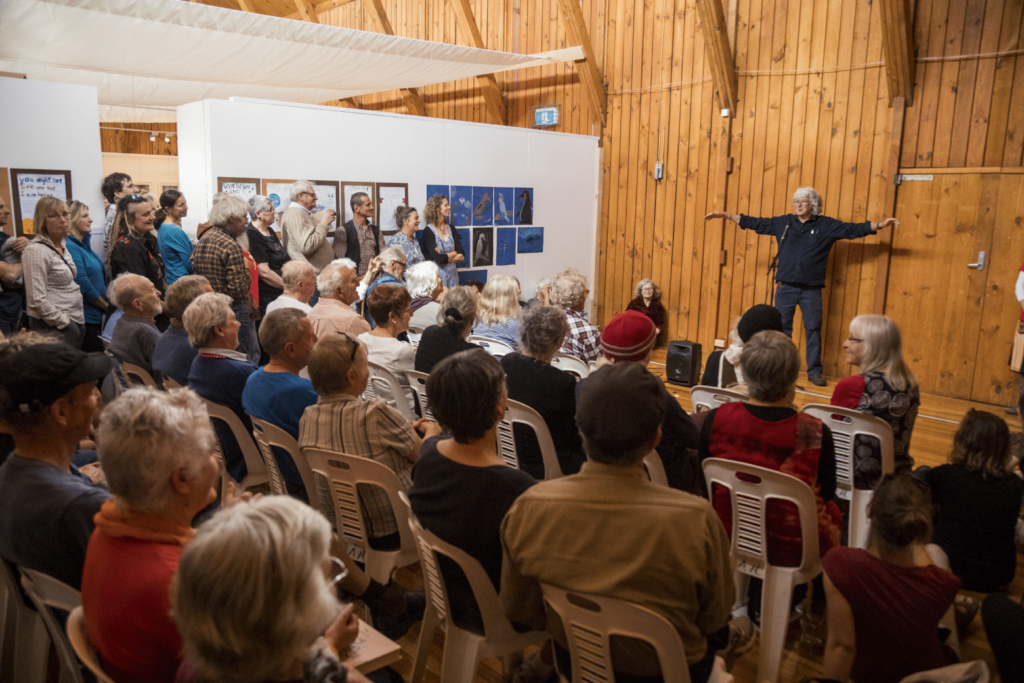Foundation for Rural & Regional Renewal (FRRR)
In the 12 years since the 2009 Bushfires, almost half of the residents of Kinglake are new to the area. So the work of Kinglake Landcare Group is important in helping to improve the new residents’ understanding of their natural environment and the importance of fire safety. As a subsidiary of Kinglake Ranges Neighbourhood House (KRNH), Kinglake Landcare Group provides support to the natural environment of Kinglake by undertaking community engagement activities and promoting sustainable agriculture.
With support from our Grants for Resilience & Wellness – Kinglake Ranges (GR&W Kinglake) program, Kinglake Landcare Group was able to make quite an impact on the community with their organised activities. The Group used their GR&W Kinglake grant to facilitate bushwalks and workshops to provide a practical way for residents to become familiar with the native flora, including how to care for it.
Geordie Scott-Walker, a botanist from Wildlife Experiences, guided a group of 22 enthusiastic participants on a walk from Captains Creek Road. Along the way Geordie would stop and identify local plants, explaining each ecosystem and the importance of the relationships between plants and the environment. After a quick lunch break, the walkers were then led to the nearby Wombelano Falls where the lesson continued. Social media posts allowed residents from surrounding areas, including Whittlesea and Strath Creek to participate in the activity as well.
The grant also made it possible for Kinglake Landcare Group to hold a propagation workshop with horticulturalist, Michael Cincotta, from the Latrobe Wildlife Sanctuary. Residents were shown how to grow indigenous flora through seeds and cuttings. The pots, soil and stakes were provided at the workshop. Attendees were able to take home their own small clipping of the Round-Leaf Pomaderris plant, which is endangered in the Kinglake area.
The success of these events prompted Kinglake Landcare Group to schedule more walks that have been postponed due to the coronavirus. With the enthusiasm and support from other nearby towns, the natural environment of Kinglake ranges will continue to improve and flourish.
By attending either of the activities these local communities were able to build on the knowledge and understanding of their natural environment. The hope is that each resident who participated in the walk or workshop will continue to share the information with others. The skills learnt at the bushwalk and the workshop have given individuals the power to help maintain the natural flora and take an active role in their community.
Warddeken, an Aboriginal owned not-for-profit company, combines traditional ecological knowledge with Western science to manage and protect one of Australia’s most unique environments.

Arnhem Land covers 97,000 sq km of the top end of the Northern Territory.
During the second half of the twentieth century, many Traditional Owners were encouraged to move away from either remote parts of Arnhem Land and join missions, or larger communities to search for more ‘traditional’ work opportunities.
As a result, many parts of the area were left without people and ‘Country was orphaned’ – the term used for land without its people.
Over a number of decades fine-scale fire management was replaced by raging yearly wildfires, feral animals and invasive plants severely impacting the native species.
The plants and animals that make up the local ecosystems had previously evolved to rely on Bininj (the Aboriginal people of Western Arnhem Land), however the disruption in traditional Indigenous land management diminished the ecosystem and led to plummeting numbers of small to medium–weight mammals. This included culturally important species like djabbo / northern quoll and bakkadji / black-footed tree-rat. Refugia, including rainforest patches shrunk and fresh-water places were destroyed.
Getting things back on track
Warddeken is an Aboriginal-owned, not-for-profit company that combines traditional ecological knowledge with Western science to manage and protect one of Australia’s most unique environments.
Warddeken operates out of the remote homeland communities of Kabulwarnamyo, Manmoyi and Mamadawerre in west Arnhem Land. Each year up to 180 Indigenous rangers work on a variety of projects including fire management and carbon abatement, invasive weed and feral animal control, rock art conservation, education and cultural heritage management.
In 2010 Aboriginal Elders from the Warddeken and Djelk IPAs established the Karrkad-Kanjdji Trust to seek philanthropic sources of funding for land management and cultural projects.
Last year, they received a $15,000 Seeds of Renewal grant from ANZ and FRRR to help fund a network of cameras that look into the prevalence of djabbo (northern quoll) on the land to understand the impact of its own land management practices and programs on this priority mammal species.
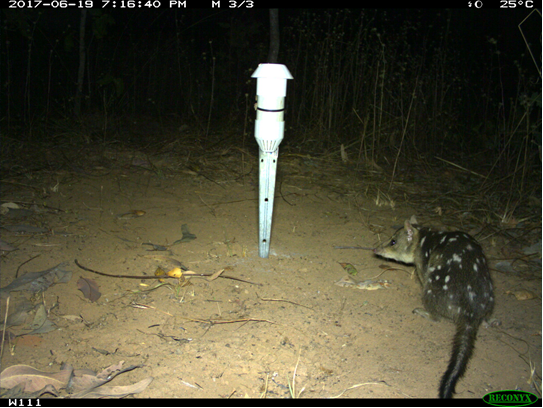
Curbing the decline
Djabbo populations identified by the monitoring project are actively considered in annual early burning and wildfire suppression activities, and are targeted for further investigation for the purposes of building population resilience.
With meaningful involvement and employment of landowners and rangers, Warddeken will seek to define quoll and major predator feral cat population density and distribution to inform the design of predator suppression strategies if required.
Indigenous rangers, living and working on Country, are best placed to curb the decline in native biodiversity loss and improve habitat for future generations.
Rangers in West and Central Arnhem Land tirelessly blend Indigenous ecological knowledge and western science to control threats and help native species begin to thrive in their natural environment.
CEO of Karrkad Kanjdji Trust, Stacey Irving says “Warddeken’s vision is to have healthy people living and working on healthy country. The generous support of the ANZ Seeds of Renewal program is helping rangers care for species like the Djabbo.’’
Terrah Guymala, Senior Warddeken Ranger adds, “When we, Bininj people, see animals, we get excited because they play a big role in our life through our ceremonies.
“This year we have seen lots of animals that we love, but we hope this number increases so we can physically show our children rather than relying on rock art to tell the stories,” Terrah says.
ANZ General Manager Business Banking Jenefer Stewart says the ANZ Seeds of Renewal program has been providing grants for important initiatives in regional and rural Australia for nearly 20 years.
“Each year I look forward to seeing the difference the grants are able to make in these communities, many of which find it difficult to access the resources they need to grow, develop and prosper,” she says.
Written by Karly Dwyer, ANZ
For centuries, red gums have dotted the landscape in south-west Victoria and south-eastern South Australia. A few community members from the small town of Cavendish in south-west Victoria understand the importance of these trees to the local natural environment. But they wanted to share their passion more widely and put the spotlight on these fantastic trees.
A creative approach
In 2017, this small group set up the Red Gum Festival Development Group Incorporated (RGFDG). One of their first projects was an arts festival, designed to explore and celebrate all aspects of the red gum species and hopefully, increase community understanding and willingness to protect the local environment. They also hoped that it would help to attract more tourists who already come to see the famous trees, and in turn support the local economy.
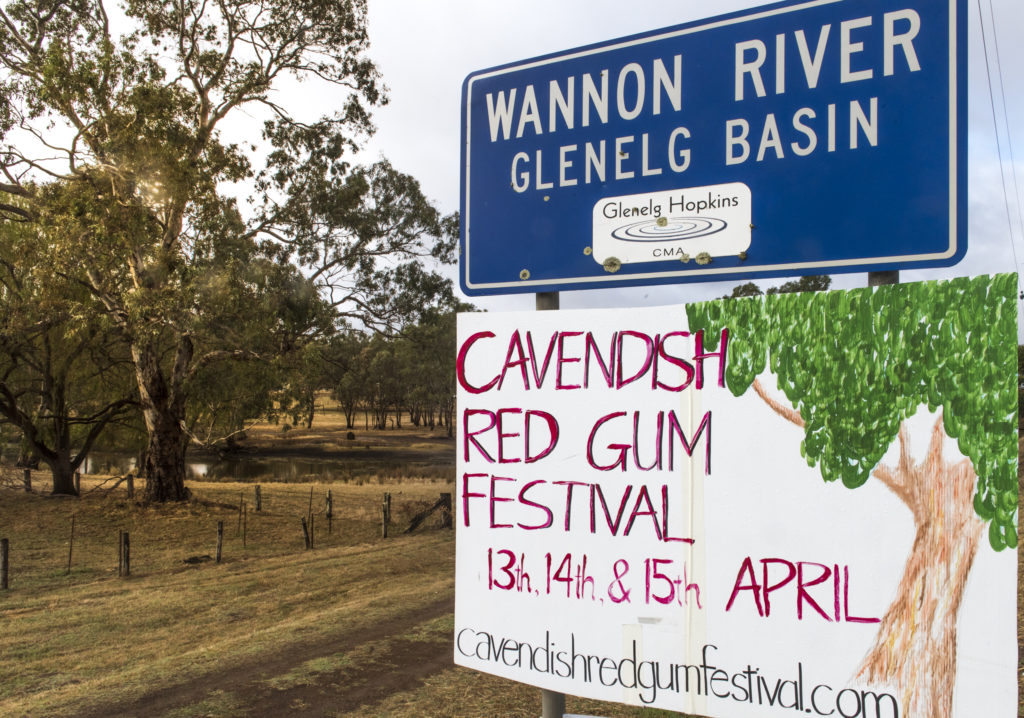
A $3,410 grant from FRRR was the initial funding for the inaugural Cavendish Red Gum Festival.
A committee of 12 and a team of 57 volunteers launched the inaugural Festival in April 2018. They worked hard to establish strong relationships with numerous local groups, including the Cavendish Recreation Reserve Committee, primary school, Lions Club and Men’s Shed, to ensure the project had extensive support.
To spread the word and build momentum in the lead up to the Festival, the RGFDG hosted sculpture, photography and writing competitions, with winners announced during the Festival. On the day, there was a wide range of activities, including markets, food stalls, exhibitions of wood-turning and musical performances.
Other core elements of the Festival were the science-based exhibits and a symposium featuring experts in forestry, conservation and tree science, and a bus tour of notable tree specimens and new plantations. These contributed to a document that is being shared with local Landcare groups, farmers and other interested parties to help preserve the trees. There is also a plan to generate a map of red gums, as a way of monitoring their size and health.
Sustainable solution
A second festival is planned for 2020, and it’s hoped it will become a regular community celebration. The growth of this arts festival has the potential to build community pride, attract tourists and significantly contribute to the local economy. Plus, by raising awareness of the importance of the trees and knowledge of their needs, the community, including landowners, will be better positioned to care for and protect them.
Art drew the crowd, and data and awareness will preserve the red gums. The Red Gum Festival was chosen to participate in the Art Resides Here project as the community is using the appeal of arts and cultural activities to raise awareness about the local environment.
They will tell their story at Artlands Victoria in Castlemaine and Bendigo in October 2018.
Greening Australia (Tas) is a leading environmental restoration organisation, restoring and conserving natural landscapes, producing clear, practical plans that allow people and wildlife to coexist. Their aim is to optimise greater understanding and involvement of Tasmania’s biodiversity hot spot through the running of conservation and artistic workshops for the community.
They received a $4,000 grant from the Small Grants for Rural Communities program, funded by the Yulgilbar Foundation for their ‘Hot Spot Snapshot’ program, which saw Greening Australia (Tas) run two activity field days at Cressy and Campbell Town, south of Launceston in Tasmania.
University researchers, restoration ecologists, artists and the school community came together to share their skills and knowledge with students from Oatlands and Campbell Town. More than 200 people participated in the Biodiversity Day at Oatlands; 70 people attended the Big Biodiversity Night Out at Merton Vale in Campbell Town, and this was followed by a BIG Day Out on 8 September at Ross with 30 Campbell Town Students working with 70 Architecture and Design Students from the University of Tasmania to build ‘Species hotels’, sculptural works to highlight the planted habitats for the threatened species in the Midlands Biodiversity Hot Spot. These will be established as a sculpture trail at Ross. Campbell Town students also planted 200 trees on a site next to the proposed Sculpture Park.
The grant was used to fund the purchase of wildlife cameras, video production, workshop materials, and travel for students as part of this collaborative community project.
A summer hotspot
Bruny Island is one of those places that people tell you to visit in Tasmania – the population of this spectacular island, only accessible by car ferry, swells from 700 to around 4,500 over the summer months. The local economy has made the move from a mixture of farming, orchards and timber harvesting to one based on ecotourism, niche food production, acquaculture and sheep grazing.
There’s more to this festival than feathers
The Bruny Island Environment Network (BIEN) was formed in 2009, and membership stands at 107. Its aim is to promote the biodiversity, cultural heritage and scenic values of the island, generate resources and support for their protection, support sustainable economic activity, provide information to landholders and the wider community about environmental and conservation issues, work together to address these issues and provide a framework for action regarding timber harvesting.
One of the group’s activities is the Bruny Island Bird Festival. The young festival, which held its inaugural event in 2010, required some infrastructure and equipment to help it gain momentum and achieve its educational aims.
The group was awarded a Small Grant of $1,093 for funding to purchase a 3m x 4.5m marquee that would be used as the key festival and visitor information booth.
Everyone joined in
The festival is a focal point for longer term education, art and conservation projects with local school children and various other community groups, including a photography and art competition that drew many participants. The Men’s Shed blokes built nesting boxes to sell, the CWA groups organised the market day, and catering and tourism operators and boutique food operators offered special guided tours, tastings and accommodation packages.
Not only would the festival be a boost to economic activity in an otherwise quiet period (late October) but it would help to fund the conservation activities of the BIEN and demonstrate the wonderful array of bird life and the potential for alternative uses of the South Bruny Forests to provide ecologically, economic and socially sustainable benefit for all.
Year round benefits
The event was a great success with around 400 registered attendees and accommodation on the island was nearly fully booked. Mr Graham said that they have seen a subsequent increase in the niche sector of bird related tourism. “The beauty is of course that the birds are here all year round, so once awareness is increased by events such as the festival, the benefits continue beyond that time.”
The marquee proved extremely handy – and was ‘invaluable in the smooth running of the festival’. Volunteers and businesses could direct people to the marquee for any assistance if they were not able to answer queries, and it was a point for patrons seeking last minute details of their booked tours. It has been used multiple times since the event and has proved a useful addition to the island’s community equipment.

